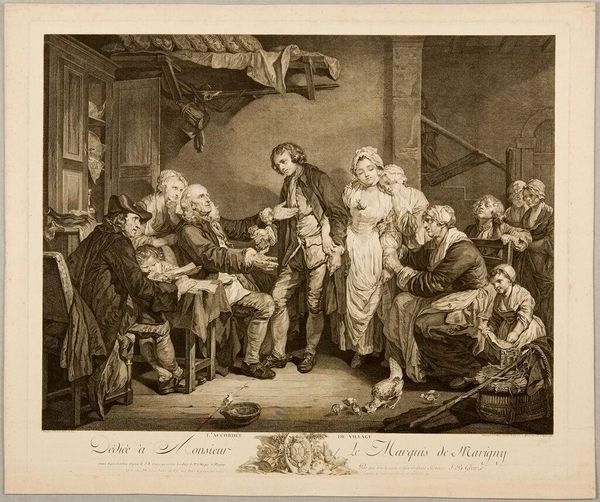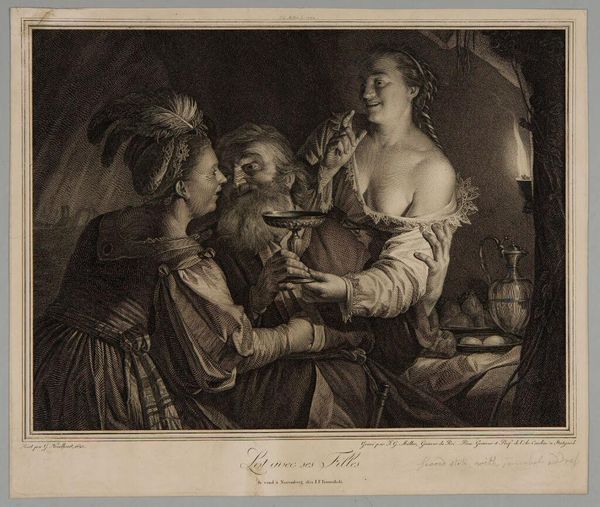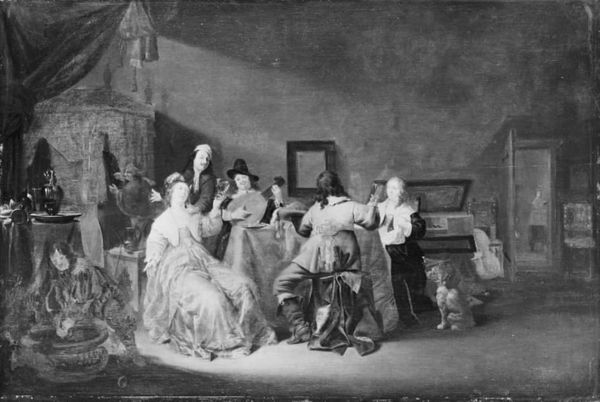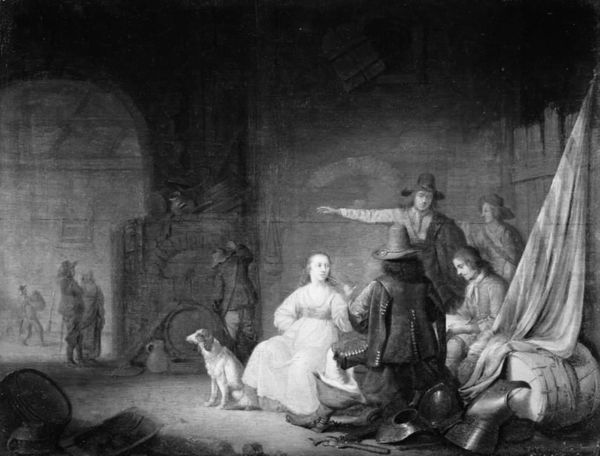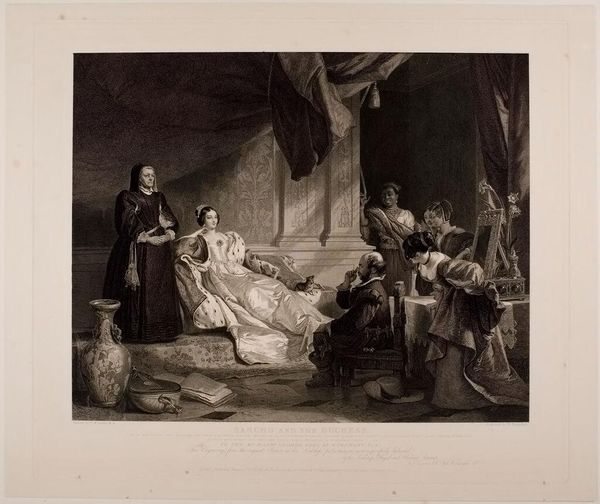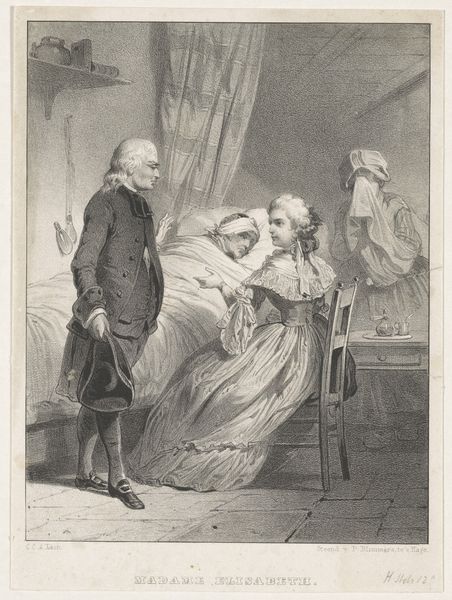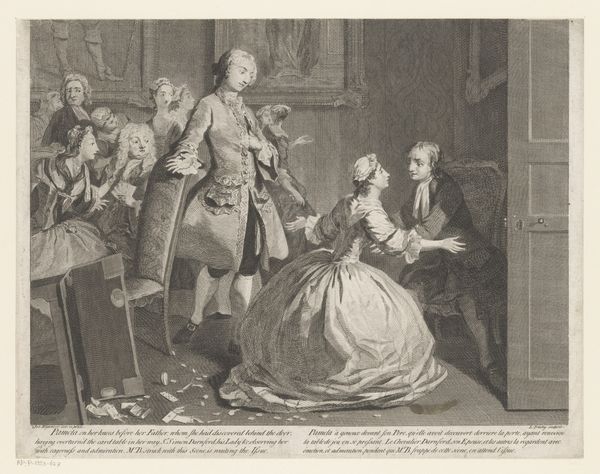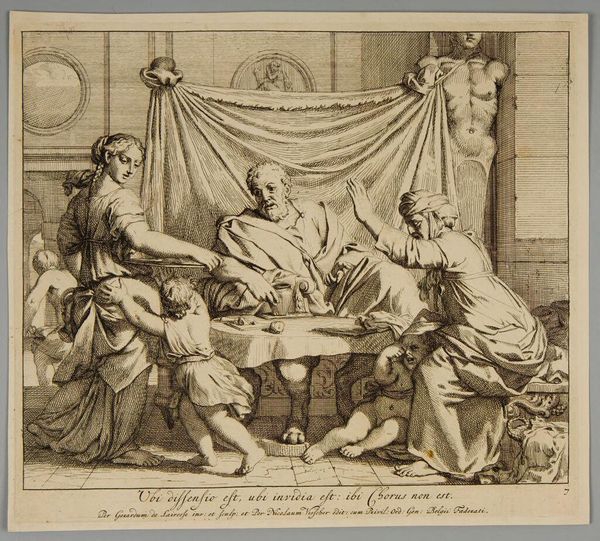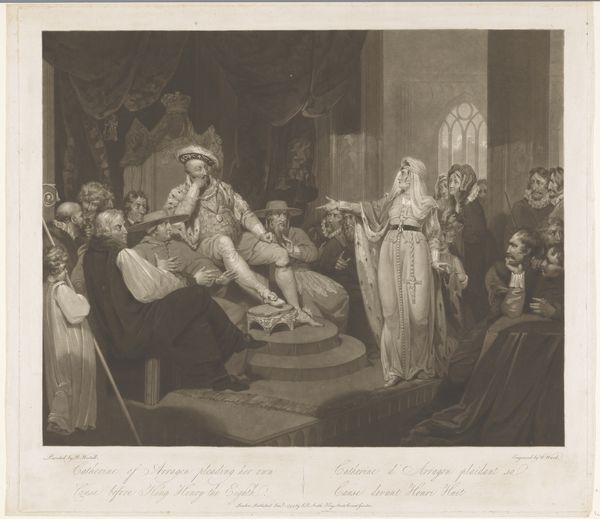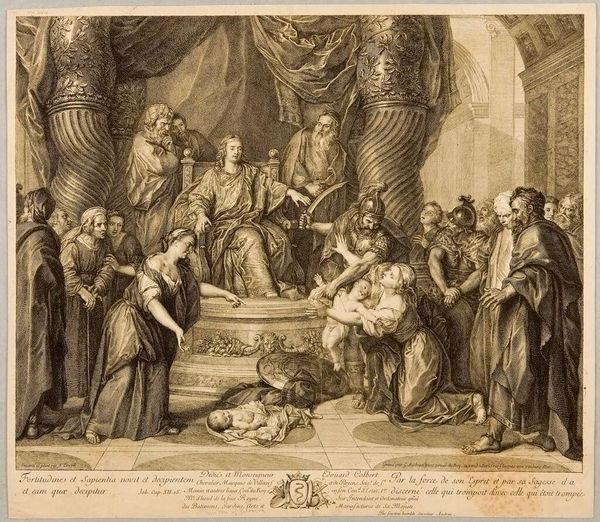
The Washington Family: George Washington, His Lady, and her Two Grandchildren by the Name of Custis–George Washington, Son Epouse, et Ses Deux petits Enfants du Nom de Custis 1798
0:00
0:00
drawing, print
#
portrait
#
drawing
#
neoclacissism
# print
#
group-portraits
#
history-painting
#
academic-art
Dimensions: image: 18 5/16 x 24 7/16 in. (46.5 x 62 cm) sheet: 20 1/4 x 25 3/8 in. (51.4 x 64.5 cm)
Copyright: Public Domain
Editor: Here we have "The Washington Family" by Edward Savage, created in 1798. It's a print depicting George Washington with his family. I’m struck by how deliberately posed everyone is. What do you see in this piece, especially considering its historical context? Curator: What I see is a careful construction of power and legacy, laden with symbolism that reveals uncomfortable truths about early America. Notice the map, presumably charting the new nation’s territories; it underscores Washington’s role in territorial expansion, yet it's expansion built on the displacement and genocide of Indigenous peoples and the labor of enslaved Africans. The presence of the enslaved man behind the women is a stark reminder. Editor: That's a powerful point. I was focused on the neoclassical setting, the composition, but didn't consider that deeper contradiction. It's like the image wants to project stability and progress, but at a cost. Curator: Precisely. The painting's Neoclassical style, drawing on imagery of ancient republics, further idealizes the nation's founding. But we have to question: for whom was this republic created? Was it truly a nation built on ideals of freedom and equality, or one built on exploitation and exclusion? What voices are conspicuously absent from this carefully curated scene? Editor: It does feel like the image invites us to question whose story is being told and whose is being left out. What does the positioning of Washington suggest in this setting, along with the enslaved person in the background? Curator: The Washington’s placement as a patriarch reinforces a hierarchical structure. Considering who commissioned it and when helps to understand it. Looking closely we are better placed to critically analyze and understand its message about who had power in early America. It seems intended as a commemoration, but functions as an unintentional insight into the deep moral compromises made in building the nation. Editor: Thank you, I’m not sure that I would have recognized that tension on my own. This makes me think more about what is included, what isn’t and why. Curator: Exactly. By analyzing the visual language and the historical context, we reveal hidden power dynamics and can see what stories these kinds of images were intended to communicate, and the uncomfortable truths they also inadvertently reveal.
Comments
No comments
Be the first to comment and join the conversation on the ultimate creative platform.

